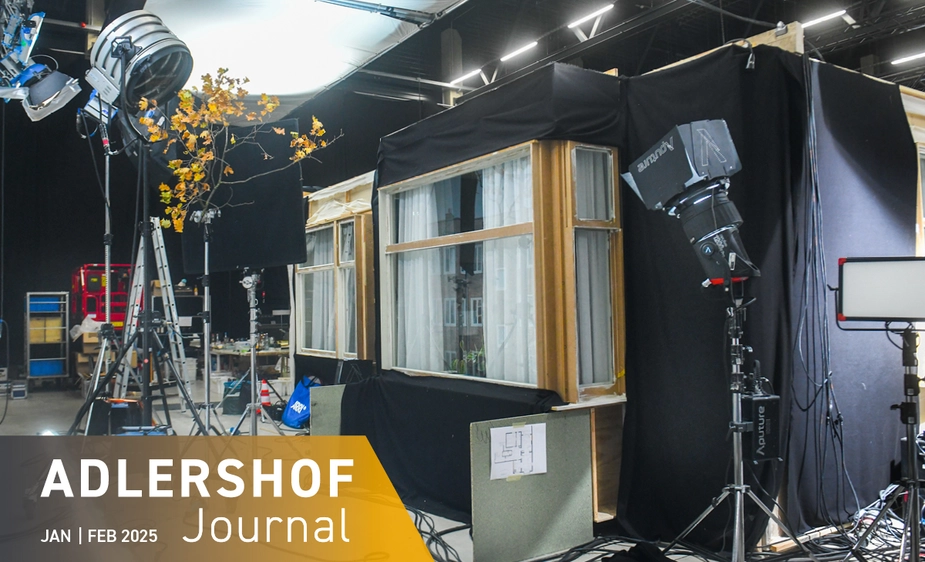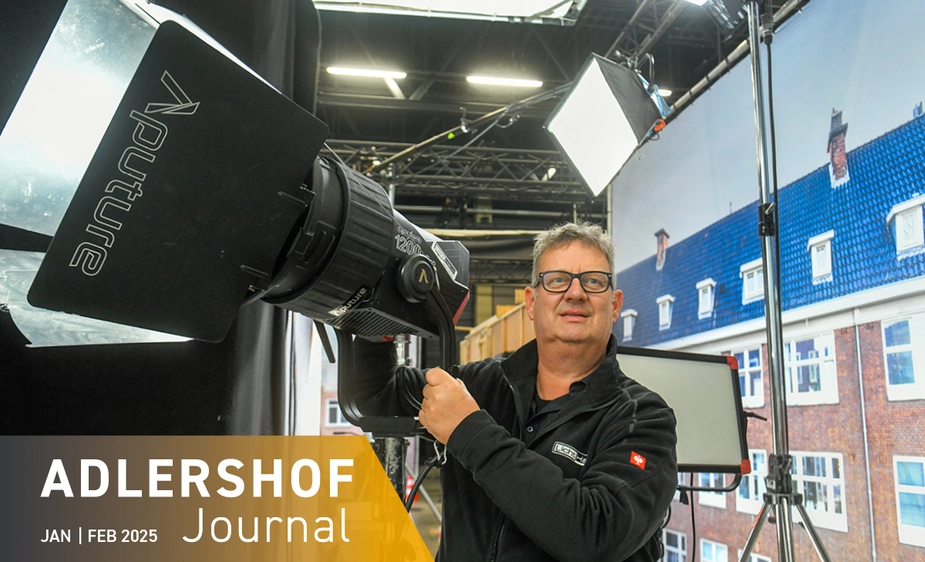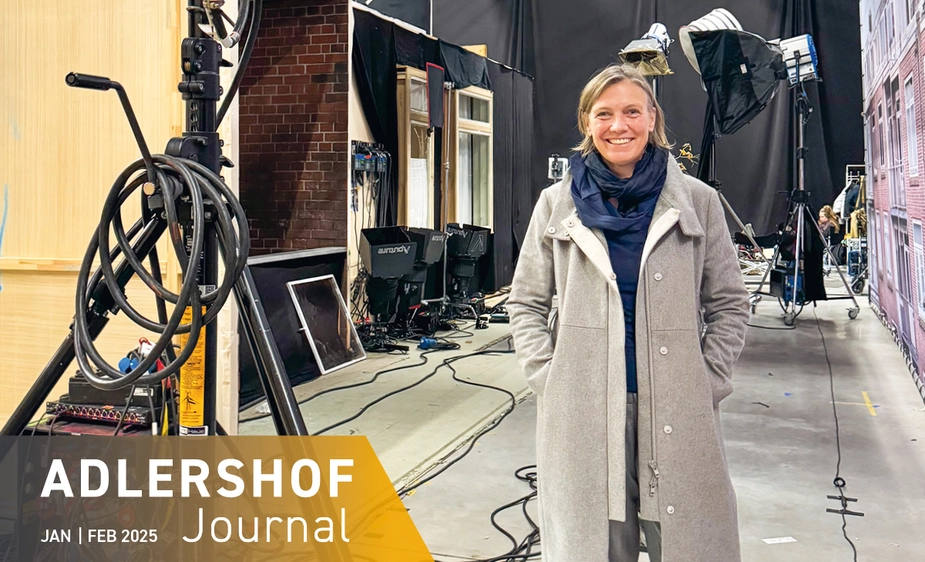A bandage on many wounds
The life of Etty Hillesum was recently filmed at the studios of the LichtHaus Group
At Gross-Berliner Damm 83a, the Johannisthal film studio of the LichtHaus Group spans 1,300 square metres and is just 500 metres from the historic Johannisthaler Filmanstalten, or Jofa film studios. It was here that, in late 2024, Israeli director Hagai Levi portrayed the life of Dutch-Jewish intellectual Etty Hillesum for a six-part series titled Etty on the French-German channel ARTE. Hillesum, who studied law and Slavic studies in Amsterdam, sought light even in the ‘hell on earth’ of the Holocaust, finding order and clarity through writing a diary. In September 1943, she was deported to Auschwitz-Birkenau and murdered at the age of just 29. Her diaries end with the words, ‘One wants to be a bandage on many wounds.’
Her legacy—eleven notebooks and numerous letters—was first published to great public interest in the Netherlands in the 1980s, and only released in German in 2023. Director Levi admires Hillesum’s ‘steadfast stance against hate, the inspiration she offers to create a space within oneself where one can be free and protected, and her radical solidarity.’ Hillesum is portrayed by Julia Windischbauer, with her partner, Julius Spier—a German émigré and psychoanalyst—played by Sebastian Koch. Levi filmed parts of the film at the Rijksmuseum in Amsterdam and the original Jewish Council building, with interior scenes shot in Adlershof.
For set designer Silke Buhr, it was a stroke of luck. ‘We have a wonderful infrastructure here, with a props and costume collection, specialists, painters, and art directors. I have access to a different kind of treasure trove than in the Netherlands,’ says the native Berliner. It was also convenient that the lighting department is directly adjacent to the film studio. According to Mike Zimmermann, managing director of LichtHaus Berlin GmbH, between 80 and 100 LED spotlights were needed for the production.
When Buhr joined the project, she worked through the script scene by scene with Levi, Maayan Eden, the creative producer from Israel, and French producer Yaël Fogiel. Later, the costume and camera departments joined in. ‘The phase at the beginning is a lovely and free time because there’s no financial pressure yet,’ explains Buhr.
Etty and Spier's apartments were recreated from floor plans from the Amsterdam building archives, closely resembling the original properties. Since Etty's student room no longer existed, the team reconstructed it from photographs, while Julius Spier’s apartment was measured on location in Amsterdam. Everything was made slightly larger at the Adlershof studio, however, to optimise sight lines.
The furniture was pivotal to Buhr and her team. She tells us how this was part of the early phase: ‘We considered what we wanted to express psychologically and which colours to use. Etty’s space is darker, more confined, and more oppressive.’ The director’s focus was on a modern aesthetic to ensure the series felt relevant today: ‘Of course, the story happened in 1941, but Levi wanted to create broader identification. This was not easy feat, as this is a historical figure that we’re bringing into the present. We had to find a cinematic translation for that.’
One way of doing this was through a modern interpretation of Spier’s home: The flat was furnished in a Bauhaus style. While this wasn’t how the apartment originally looked, the Bauhaus style was rejected by the Nazis, making it a fitting choice for the story. The series is set to air in 2026.
Susanne Gietl for Adlershof Journal
Video: Director Hagai Levi on the making of the ARTE series (YouTube link)



